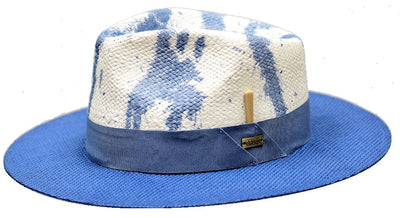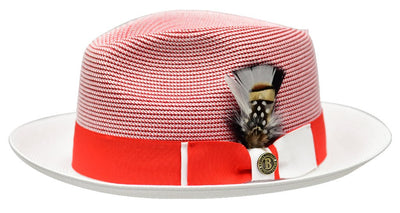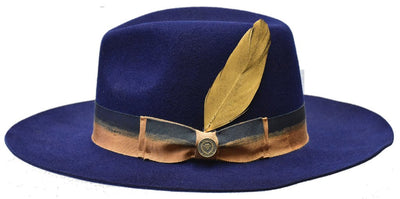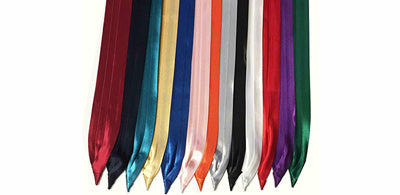Hat 101

What's the best hat shape for me?
Hats are like love. There is a hat out there for everyone and you’ve come to the right place. We are good at playing matchmaker and we want to help you find the perfect hat!
While every face is different, most shapes can be separated into 4 general shapes. Read through the descriptions below and try to find out what hat styles will work for you! If you are still confused you contact our Style Techs at orders@brunocapelo.com
If you’re looking for a little hat love, read this guide to get started. We’ll walk you through the basics.
DIAMOND-SHAPED FACE

OBLONG FACE

ROUND FACE
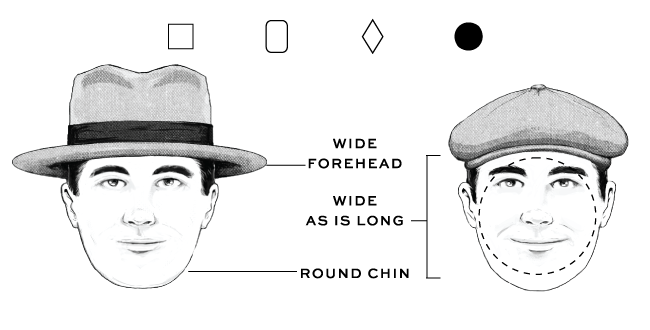
SQUARE FACE

Hat Glossary
The frontal portion of a cap that sticks outward from the body, shading the eye. Also referred to as a peak.
BlockingThe term used to describe the action of creating or forming a hat shape. Often, a block made of wooden form is used as a mold to shape a brim or crown, by hand.
BoaterA flat-topped hat with a flat brim, traditionally made of stiffened straw, made popular by Italian gondoliers. Some call it a skimmer, but by any name this hat will always be a quintessential summer dress style.
BowlerAn oval hat with a rounded, open crown and an upturned brim. Also known in the states as a derby, this shape was originally created as an alternative equestrian style to the top hat.
BrimThe projecting edge of a hat that extended completely outwards, 360 degrees, from the bottom of the crown of a hat.
CapA hat with a small bill at the front. It could be an ivy, a gatsby, or a baseball.
CreaseThe indentation on the top of the crown, dictating the shape of the hat.
CrownThe top body portion of a hat which features a brim.
Edge BindingFabric trim sewn onto the edge of the brim, traditionally grosgrain ribbon.
EmbossedCarve, mold, or stamp a design on a surface so that it stands out in relief.
FedoraA brimmed hat, with a pinched crown, that effortlessly elevates any outfit. This hat is still the most prevalent shape because it can be so easily suited to one’s personality and features.
Felted WoolRaw wool that has been drenched in soapy water and agitated into a firm mat. Since wool hairs are made up of scales, this process loosens and then locks together scales from individual hairs to create a thick, strong, non-woven material.
Flat CapEach style of flat cap fits a different face shape and outfit. Although this shape has changed throughout the years it stays true to its original purpose, as an everyday style.
GauchoSimilar to a boater, though made of a stiffened wool or fur felt. This hat has a circular, flat crown and a wide, flat brim.
GatsbyThis over-sized cap features 8 panels and a bill, and may or may not feature a top button detail. They've been referred to by a variety of monikers, in relation to its location or occupation around the world, such as an apple cap, paper boy, and newsboy to name a few.
GinghamA printed or dyed fabric that is known for its checked patterns of white and a bold color.
Grosgrain
(GROW-grain) A strong, heavy corded fabric characterized by its ribbed appearance. Grosgrain is made from wool, silk, or a combination of fibers. While historically it had a wide variety of uses, it is now most commonly used as ribbon for hat bands.
The band wrapped around the shoulder of the hat, visually separating the body's crown from the brim. *See Grosgrain
Hat BlockA sturdy wooden or alloy block molded into a variety of crown shapes, used to form the intended shape of an individual hat's crown.
HerringboneA V-shaped twill weaving pattern that forms the appearance of a broken zigzag and is most commonly used in suiting.
HomburgFormal hat made of felt with a narrow, upturned brim and a single crease in the top of the crown, with no pinch.
LiningAdditional trim on the inside of a hat traditionally made of satin, silk, or polyester.
Lux FinishThis "luxurious" American made wool finish imitates the look and feel of fur, cruelty free. Note the natural sheen of the wool. This develops when stretching the wool fibers. Because the wool is stretched, it is not water resistant or packable, and reserved for more dress styles. The wool fibers may start curling if they get wet, changing the texture of the felt.
Measuring RingAn instrument used to measure the inside diameter of a hat in order to determine its finished size.
PinchThe indentations on the front of the crown helping to dictate the shape of the hat.
Pork-pieA hat with a shorter, circular crown and a brim. Pork-pies will often have a telescope or diamond crown, absent of a pinch in the front, like that of a fedora.
Raw EdgeThe unfinished edge of the brim. There is no seam sewn, the material is cut to its edge.
SweatbandThe band inside the hat, wrapping the diameter of the crown, which presses against the forehead.
Top HatA tall cylindrical hat with a narrow brim and the most popular among gentlemen of every sort until the bowler supplanted it in the late 1800's.
Under-brimThe underside portion of the brim or bill.
Under-welt
The edge of the brim where the material is folded under the brim and sewn.
